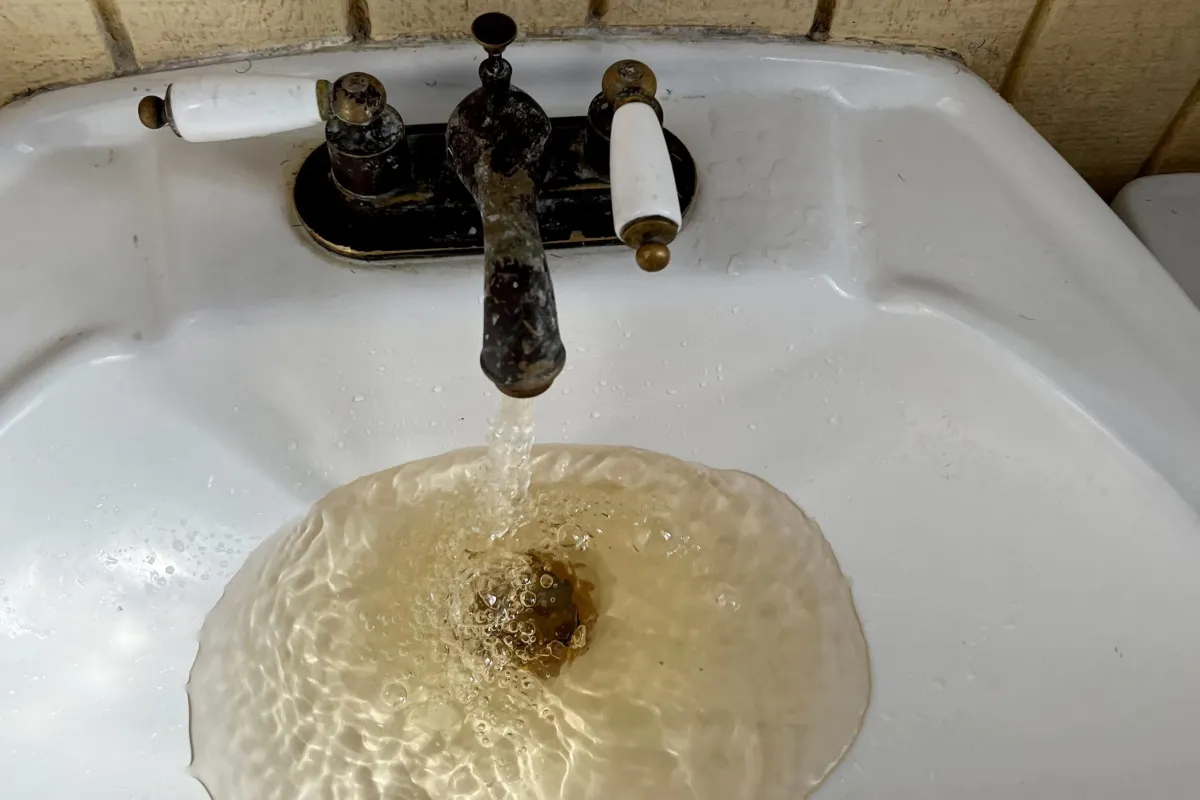When you turn on your tap to pour a glass of water or take a refreshing shower, the last thing you expect to see is yellow water flowing out. However, this unsettling phenomenon is not uncommon in many households. In this comprehensive guide, we will explore the reasons behind yellow tap water, whether it’s safe to drink, how to fix it, and whether it’s okay to shower in it. Let’s dive in.
Why is My Tap Water Yellow?
Yellow tap water can be caused by a variety of factors. Understanding the underlying reasons can help you address the issue effectively.
Dissolved Minerals
One common cause of yellow tap water is the presence of dissolved minerals, particularly iron and manganese. These minerals can leach into your water supply from the ground. When they oxidize, they give the water a yellow or reddish tint.
Sediment
Another reason for yellow water is sediment buildup in the water pipes. Over time, rust, sand, or other particles can accumulate in the pipes. When water flows through these pipes, it can pick up these sediments, leading to discoloration.
Corrosion
Corroded plumbing systems can also contribute to yellow tap water. If your pipes are old and made of materials like iron or steel, they may develop rust or corrosion, which can taint the water with a yellow hue.
Microorganisms
In rare cases, microorganisms like algae or bacteria can thrive in water pipes, producing yellowish or greenish water. This is more common in areas with low water flow or stagnant water.
Is Yellow Tap Water Safe to Drink?
The safety of yellow tap water largely depends on its cause. Here’s a breakdown:
Dissolved Minerals (Iron and Manganese)
Water containing elevated levels of iron and manganese is not harmful to human health. In fact, these minerals are essential nutrients. However, they can affect the taste and appearance of water, making it less appealing to drink.
Sediment
Water with sediment is generally safe to drink, but it may taste gritty or unpleasant. The sediments themselves are not harmful, but they can indicate issues with your plumbing system that should be addressed.
Corrosion
Corrosion in pipes can lead to the release of heavy metals like lead into the water, which poses health risks. If you suspect corroded pipes, it’s essential to have your water tested for contaminants.
Microorganisms
Water contaminated with microorganisms can be unsafe to drink. If you suspect microbial contamination, it’s crucial to have your water tested for harmful bacteria and treat it accordingly.
How to Fix Yellow Water in a Tap
If you’re experiencing yellow tap water, there are steps you can take to address the issue:
Flush Your Pipes
Run cold water for a few minutes to clear out any accumulated sediment or minerals in the pipes. If the problem persists, try running the hot water as well.
Check Your Plumbing
Inspect your plumbing system for corrosion or rust. If you find issues, consider replacing corroded pipes to prevent further contamination.
Water Treatment
Consider installing a water treatment system, like a water softener or iron filter, to remove minerals that cause discoloration.
Consult a Professional
If the problem persists or you suspect contamination, consult a professional plumber or water quality expert. They can conduct tests to identify the exact cause and recommend appropriate solutions.
Is it OK to Shower in Yellow Water?
Showering in yellow water is generally safe as long as the cause of discoloration is not harmful microorganisms or corrosive substances. Sediment and mineral-based discoloration pose minimal health risks when in contact with the skin. However, showering in such water may leave residue on your body, which can be bothersome.
FAQs
Q1: Can yellow tap water stain my clothes or fixtures? A1: Yes, yellow tap water can stain clothes, fixtures, and appliances due to the presence of minerals and sediments. Using water treatment systems can help prevent these stains.
Q2: Does boiling yellow tap water make it safe to drink? A2: Boiling can help with microbial contamination but won’t remove mineral-based discoloration. It’s best to address the root cause of the yellow water.
Q3: Are there any health risks associated with drinking water with sediment? A3: Generally, sediment itself is not harmful, but it can indicate issues with your plumbing. If the sediment is due to corrosion, it may introduce harmful substances into the water.
Conclusion
Yellow tap water can be unsettling, but it doesn’t necessarily pose health risks. Identifying the cause is crucial to determine whether it’s safe to consume. If in doubt, consult a professional to assess and address the issue properly. Remember that regular maintenance and water quality testing can help ensure clean and clear tap water in your home.
Sources:

